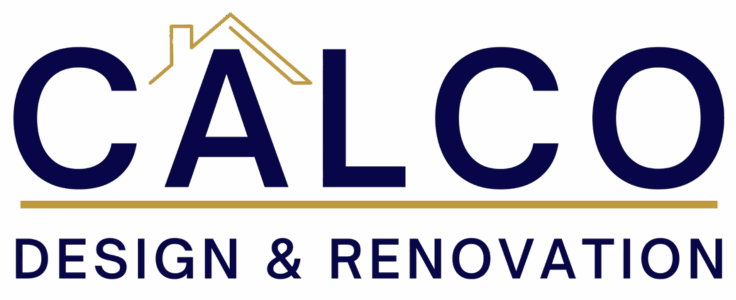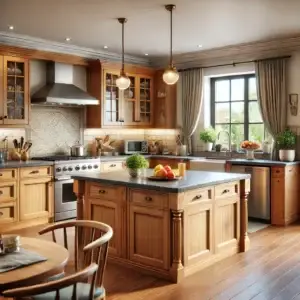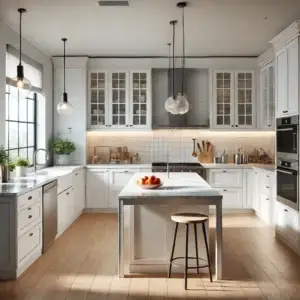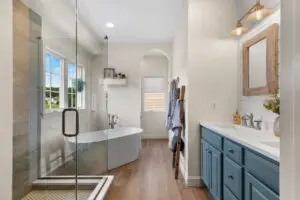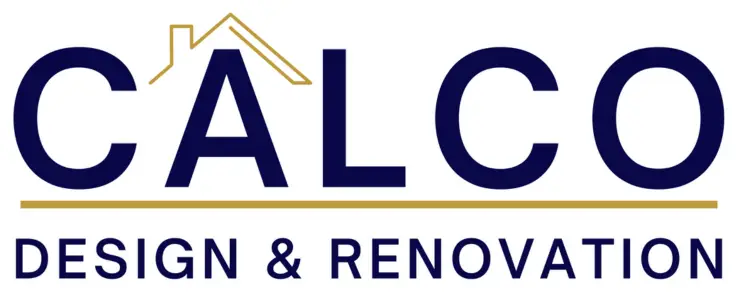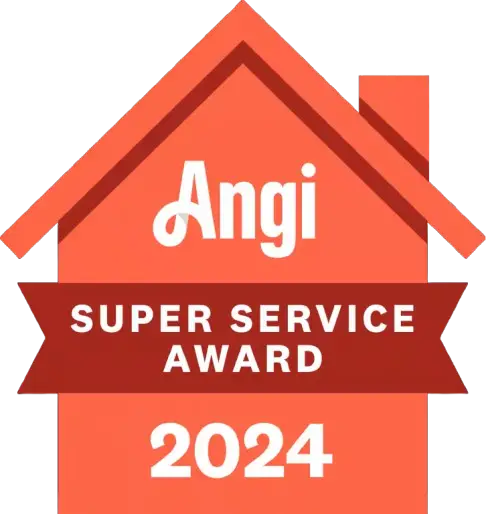Kitchens come in many different shapes, styles, designs, and price points. Two popular kitchen options are modular or custom. Both have unique characteristics and offer different benefits depending on the homeowners’ style preferences, lifestyle, and budget. Ultimately, the choice between the two depends on factors such as budget, time constraints, desired level of customization, and the importance placed on unique design and style.
Key Takeaways
- Standard kitchens are generally more budget-friendly and quicker to install compared to custom kitchens.
- Custom kitchens offer limitless design options, allowing for precise customization of materials, finishes, layouts, and features.
- The installation process for custom kitchens is more elongated and involves more detailed craftsmanship compared to standard kitchens.
- Choosing between stock and custom kitchen cabinets involves balancing budget, style, and specific kitchen needs.
- Both standard and custom kitchens have their unique advantages, and the best choice depends on individual preferences and requirements.
Cost Considerations
When planning a kitchen remodel, cost is a pivotal factor that influences decision-making. The price tag associated with standard and custom kitchens varies significantly due to several elements.
Factors Influencing Standard Kitchen Costs
Standard kitchens are generally more budget-friendly. The affordability stems from mass-produced components, which benefit from economies of scale. For instance, stock cabinets, which range from $50 to $300 per linear foot, offer a practical solution without a hefty price tag. Additionally, standard kitchens often involve less custom carpentry work, further reducing costs.
Factors Influencing Custom Kitchen Costs
Custom kitchens, on the other hand, come with a higher price tag due to the inclusion of personalized design and craftsmanship. Custom cabinetry selections, such as unique door styles and high-end paints and stains, contribute to the elevated costs. Moreover, custom-fabricated stone countertops and backsplashes add to the overall expense. These bespoke elements ensure that the kitchen fits the specific needs and aesthetic preferences of the homeowner.
Comparing Long-term Value
While the initial investment for a custom kitchen is higher, it can offer greater long-term value. Custom kitchens are tailored to the homeowner’s lifestyle and can enhance the overall functionality and aesthetic appeal of the home. This personalization can potentially increase the home’s market value. Conversely, standard kitchens, though more affordable upfront, may not offer the same level of long-term benefits. Therefore, homeowners must weigh the initial costs against the potential long-term value when deciding between standard and custom kitchens.
Design Flexibility
Design flexibility is a crucial aspect when choosing between standard and custom kitchens. Standard kitchens typically come with predefined layouts and limited options for modification. This can restrict homeowners who have specific design preferences or unique space requirements. However, they do offer a range of styles and finishes that can suit many tastes.
Custom kitchens, on the other hand, provide a vast amount of design flexibility. They can essentially be a “blank slate” when you start your design process. Every element can be personalized to the homeowner’s desire, ranging from cabinets and countertops to lighting and plumbing fixtures. Ultimately, how custom you go is up to each individual client.
Balancing personalization and practicality is key. While custom kitchens offer unparalleled flexibility, they also require careful planning and a higher budget. Homeowners must weigh their desire for a unique kitchen against the practicalities of cost and time.
Material Choices
The materials used in a kitchen can significantly impact its overall aesthetic and functionality. Standard kitchens often feature more basic, mass-produced materials, while custom kitchens allow for a wider range of high-quality, tailored options that can elevate the design and performance of the space.
Common Materials in Standard Kitchens
Standard kitchens often utilize a range of common cabinet materials such as hardwood, multi-density fiberboard, particleboard, wood veneer, and stainless steel. These materials are chosen for their availability and cost-effectiveness. While stock options might be more budget-friendly, their quality and poor durability often let them down.
Unique Materials in Custom Kitchens
Custom kitchens, on the other hand, offer the flexibility to choose from a broader array of materials. This can include exotic woods, custom-mixed metals, and even reclaimed or sustainable materials. Experts unanimously agree that custom cabinetry offers a more robust and long-lasting solution, ideal for those who prioritize quality and are willing to invest in their kitchen’s future.
Durability and Maintenance
When it comes to durability and maintenance, custom kitchens generally have the upper hand. The materials used in custom kitchens are often of higher quality and are tailored to meet specific needs, making them more durable in the long run. However, this also means that they may require more specialized maintenance compared to standard kitchens. It’s essential to weigh the long-term benefits against the initial costs to make an informed decision.
Installation Process
When it comes to the installation process, modular kitchens offer a much quicker and easier experience. These kitchens are pre-fabricated and can be easily assembled on-site, making them a convenient option for those starting a kitchen renovation. This ease of installation also means that modular kitchens can be relocated or moved if necessary.
For custom kitchens, the process is far more elongated from installation to completion. There is often a lot of additional millwork involved, such as crown molding, toe-kick, and other decorative trim, which are cut and installed on-site to perfectly fit the required specifications. This meticulous attention to detail ensures a pristine finish but extends the timeline significantly.
Cabinet Options
When it comes to kitchen cabinets, there are three main types to consider: stock cabinets, semi-custom cabinets, and custom cabinets. Each option offers its own set of advantages and disadvantages, making it essential to understand the differences before making a decision for your kitchen remodel.
Stock Cabinets
Stock cabinets are the most economical choice and are readily available for pick-up or shipment. These cabinets come in standard sizes and limited styles, which means there is no design freedom. However, they are DIY-friendly and can be a quick solution for a new kitchen.
Semi-Custom Cabinets
Semi-custom cabinets offer some design freedom and a personalized experience with a designer. These cabinets are often a middle-ground option, providing more variety in sizes, styles, and finishes compared to stock cabinetry. While they require a higher budget and longer lead time, they offer a balance between cost and customization.
Custom Cabinets
Custom cabinets are designed to fit your kitchen perfectly, offering unlimited design freedom and high-quality construction. Custom cabinetry allows for premium personalization, including decorative molding and glass door upgrades. Custom cabinets may also include a wide array of storage and organization accessories, making them highly functional. However, they require the highest budget and longest lead time, making them a significant investment in any kitchen renovation project.
Layout and Space Utilization
When planning a kitchen, the layout and space utilization are crucial factors that significantly impact functionality and aesthetics. A well-thought-out kitchen layout can enhance workflow, maximize storage, and create a more enjoyable cooking environment. Below, we explore the differences between standard and custom kitchen layouts and how to optimize space effectively.
Professional Involvement
Kitchen designers play a crucial role in both standard and custom kitchen projects. They bring expertise in layout, functionality, and aesthetics, ensuring that the kitchen meets the homeowner’s needs and preferences. Their knowledge can significantly impact the overall success of the project. Designers often collaborate with other professionals, such as contractors and suppliers, to create a cohesive plan.
Contractors are essential for the execution of both standard and custom kitchen designs. They handle the physical aspects of the installation, from demolition to final touches. Working with experienced contractors can help avoid common pitfalls and ensure that the project stays on schedule and within budget. It’s important to communicate clearly with your contractor to align on expectations and timelines.
While some homeowners may consider a DIY approach to save costs, professional installation is generally recommended for both standard and custom kitchens. Professional installers have the skills and tools necessary to complete the job efficiently and correctly. DIY projects can often lead to unforeseen challenges and may end up costing more in the long run due to mistakes and rework. Therefore, weighing the pros and cons of DIY versus professional installation is crucial for a successful kitchen project.
Aesthetic Appeal
The visual appeal of a kitchen is a crucial consideration. Standard kitchens typically offer a limited selection of styles and finishes, while custom kitchens provide a vast array of design possibilities, enabling homeowners to create a truly unique and personalized space that reflects their individual tastes and style.
Standard Kitchen Aesthetics
Standard kitchens often feature a wide array of styles, colors, and material choices that cater to general tastes. These kitchens typically follow popular trends and offer a cohesive look that appeals to a broad audience. While they may lack the unique touch of custom designs, they provide a reliable and attractive option for many homeowners.
Custom Kitchen Aesthetics
Custom kitchens are unparalleled in giving your home a high-end and unique look. They offer the opportunity to integrate warm, enchanting colors and a variety of materials to create a space that truly reflects personal taste and needs. Investing in premium cabinetry and finishes can make a significant impact, similar to the difference between a luxury vehicle and a standard one. The finer details in custom kitchens contribute to a more enjoyable and personalized cooking experience.
Trends and Innovations
Both standard and custom kitchens can incorporate the latest trends and innovations. However, custom kitchens offer superior versatility, allowing homeowners to modify cabinet depths, widths, and heights to fit their exact space. This flexibility enables the integration of decorative molding, glass door upgrades, and a wide array of storage and organization accessories, making every cabinet as functional as possible. Custom kitchens can also adapt more readily to emerging trends, ensuring that the design remains current and stylish.
Budget Planning
Cost is a significant factor when choosing between a standard or custom kitchen. Standard kitchens are generally more affordable, as they are mass-produced and utilize more economical materials. Custom kitchens, on the other hand, can be more expensive due to the bespoke nature of the design and the use of premium materials.
Setting a Budget for Standard Kitchens
When planning a budget for a standard kitchen, it’s essential to consider the immediate availability and cost-effectiveness of stock cabinets. These cabinets are typically more affordable and can be purchased off-the-shelf, making them a popular choice for those looking to renovate on a tighter budget. However, it’s important to remember that while stock cabinets are budget-friendly, they may not always fit perfectly into unique or irregular kitchen layouts.
Setting a Budget for Custom Kitchens
Custom kitchens require a higher budget due to the bespoke nature of the design and materials used. The cost can vary significantly depending on the quality of materials and the complexity of the design. Custom cabinets offer greater design flexibility and can be tailored to fit any kitchen layout, but this comes at a premium. Additionally, the lead time for custom kitchens is usually longer, which should be factored into the budget planning process.
Managing Unexpected Costs
Unexpected costs can arise during any kitchen renovation project, whether standard or custom. It’s advisable to set aside a contingency fund to cover any unforeseen expenses. This could include additional labor costs, unexpected structural issues, or changes in material prices. Proper planning and a well-thought-out budget can help mitigate these risks and ensure the project stays on track.
Functionality and Efficiency
The functionality and efficiency of a kitchen are essential for its day-to-day use. Standard kitchens often have a more generic layout and may not be optimized for specific needs or preferences. Custom kitchens, however, can be designed to maximize workflow, storage, and overall usability, tailored to the homeowner’s unique requirements.
Standard Kitchen Functionality
Standard kitchens are designed with modular components that fit together seamlessly, making them suitable for common layouts like straight, L-shaped, U-shaped, and galley kitchens. These kitchens offer a range of designs and configurations, providing flexibility in terms of layout and functionality. The modular nature allows for easy installation and customization, but it also means that there are limitations in modifying the layout or dimensions significantly.
Custom Kitchen Functionality
Custom kitchens, on the other hand, are built according to the specific requirements and preferences of the homeowner. This allows for the creation of unique and tailored solutions that maximize the available space and cater to specific needs. However, this can result in a more labor-intensive and time-consuming process, requiring additional plumbing, electrical, and other roughing work to be completed. The pros and cons of custom kitchens should be carefully weighed, as they offer greater flexibility but may also involve higher costs and longer timelines.
Energy Efficiency Considerations
Both standard and custom kitchens can be designed with energy efficiency in mind. This includes the selection of energy-efficient appliances, proper insulation, and the use of sustainable materials. While standard kitchens may come with pre-selected energy-efficient options, custom kitchens offer the opportunity to choose specific features that align with the homeowner’s sustainability goals. The pros and cons of each approach should be considered to ensure that the kitchen not only meets functional needs but also contributes to energy savings and environmental sustainability.
Personalization and Customization
Customization is the key difference between standard and custom kitchens. Standard kitchens offer limited options for personalization, while custom kitchens allow homeowners to create a space that is truly their own, with the ability to choose every detail, from the cabinetry and countertops to the hardware and lighting.
Levels of Personalization
When it comes to stock or custom kitchens, the level of personalization varies significantly. Stock kitchens offer limited options in terms of color, materials, and layout. On the other hand, semi-custom and custom kitchens provide a broader range of choices, allowing homeowners to tailor their kitchens to their specific needs and preferences.
Custom Features and Add-ons
Purchasing custom kitchens allows for the inclusion of unique features and add-ons that are not available in stock options. These can include specialized storage solutions, high-end finishes, and advanced appliances. Since custom kitchens are designed to meet individual requirements, they offer unparalleled flexibility and functionality.
Impact on Home Value
Investing in a custom kitchen can significantly enhance the value of your home. Custom kitchens are often seen as a premium feature by potential buyers, making your property more attractive in the real estate market. The ability to personalize your kitchen to such a high degree can set your home apart from others, potentially leading to a higher resale value.
Conclusion
In conclusion, the choice between standard and custom kitchens hinges on various factors such as budget, time constraints, and the desired level of customization. Standard kitchens offer a more budget-friendly and quicker solution with a range of pre-determined styles and designs. They are ideal for those who need a functional kitchen without the need for extensive personalization. On the other hand, custom kitchens provide limitless design options and a high degree of personalization, making them perfect for homeowners who have specific requirements and a vision for a unique kitchen space. Ultimately, the decision should be based on individual needs, preferences, and the value placed on customization and unique design.
